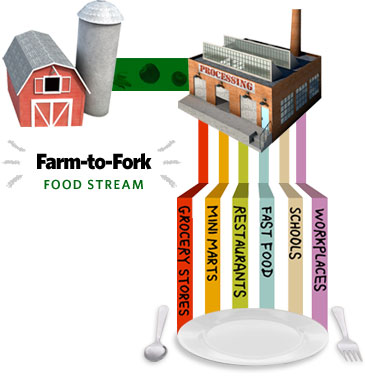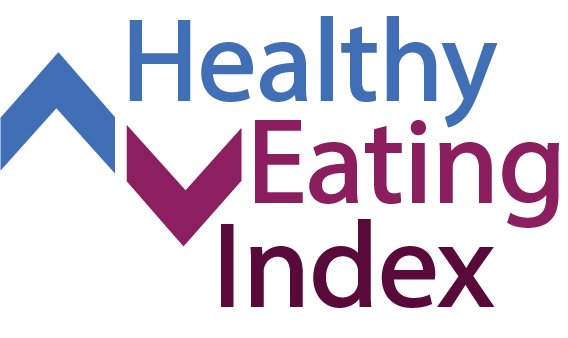
Although people do choose what to eat and drink, they can only choose from among foods and beverages that are available to them. Helping people have healthy food choices is an important part of efforts to reduce childhood obesity in America and a goal of the National Collaborative on Childhood Obesity Research (NCCOR).
Where do our foods and beverages come from? The trip from farm to fork is like a food stream. Far upstream, the source is the food supply, all the foods that farmers produce. Then the foods go through processing. These foods flow downstream through many outlets before they end up on a person’s plate. Children’s weights are affected by what they eat, as well as how much they move. How does the food stream reach them?
What do we know about the nutritional quality of choices at various points along the food stream? How closely does any given dietary pattern, set of foods, or menu match the Dietary Guidelines for Americans?

The Healthy Eating Index, also known as the HEI, is a scoring metric that can answer some of these questions. It was developed by scientists at two of NCCOR’s funding partners: the U.S. Department of Agriculture; and the National Cancer Institute, part of the National Institutes of Health.
TABLE 1
The 13 HEI-2015 Components
Adequacy
- Total fruits
- Whole fruits
- Total vegetables
- Greens and beans
- Whole grains
- Dairy
- Total protein foods
- Seafood and plant proteins
- Fatty acids
Moderation
- Refined Grains
- Sodium
- Added sugars
- Saturated fats
The HEI has been updated every 5 years since 2005 to coincide with updates to the Dietary Guidelines for Americans (DGAs). Its most current version, the HEI-2015, includes 13 components (Table 1) that each reflect an important aspect of diet quality:
- Nine components focus on adequacy (foods we should eat enough of to get the nutrients we need and for overall good health).
- Four components focus on moderation(dietary components that should be limited or consumed in small amounts).
For more information about using the HEI for research and surveillance, visit the NCI HEI website and the USDA HEI website.
The HEI has been used to assess many aspects of diet and the food environment, including the food supply, individual diets, and health outcomes. Learn how a past version, the HEI-2010, has been applied to actual foods in some of these contexts.
